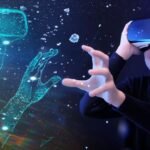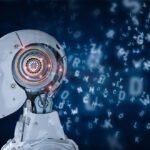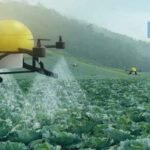Scaling the AI Ladder
/ /
In the age of digital disruption, businesses face a unique opportunity to elevate their operations to new heights through Artificial Intelligence (AI). Scaling the AI ladder involves a systematic journey towards intelligent transformation, where organizations harness the potential of AI to optimize processes, unlock valuable insights, and create a competitive edge. In this blog post, we will explore the steps to climb the AI ladder and the immense benefits that await businesses at each stage of their ascent.
- Laying the Foundation: AI Awareness and Education The first step to scaling the AI ladder is building a strong foundation of awareness and education. Business leaders and decision-makers must understand the basics of AI, its potential applications, and the transformative impact it can have on their industry. By investing in AI literacy, organizations can create a shared vision for AI integration and encourage cross-functional collaboration.
- Pioneering AI Exploration: Proof of Concept The next step involves piloting AI initiatives through proof of concepts (POCs). By selecting manageable projects that align with business goals, organizations can test AI capabilities and assess their potential impact. POCs help build confidence in AI’s value proposition and provide valuable insights to refine future AI implementation strategies.
- Embracing AI Implementation: Pilot Projects With successful POCs in hand, organizations can move towards AI implementation through pilot projects. Pilot projects allow businesses to deploy AI solutions on a larger scale within specific departments or processes. This stage involves careful planning, resource allocation, and performance evaluation to ensure the successful integration of AI.
- Scaling AI Integration: Organization-Wide Adoption Having demonstrated the effectiveness of AI through pilot projects, organizations can now scale AI integration across the entire enterprise. At this stage, businesses invest in the infrastructure, talent, and technology needed for widespread AI adoption. AI-driven automation, data analytics, and predictive modeling become integral components of business operations.
- Empowering AI-Driven Transformation: Data-Driven Insights As organizations climb higher on the AI ladder, they gain access to an abundance of data-driven insights. AI-powered analytics enable businesses to make data-informed decisions, anticipate customer needs, and identify new revenue streams. With access to actionable insights, organizations become more agile and responsive to market changes.
- Achieving AI Maturity: Innovation and Competitive Advantage At the pinnacle of the AI ladder lies AI maturity, where organizations have fully integrated AI into their business strategy. AI becomes a catalyst for continuous innovation, empowering organizations to pioneer disruptive solutions, enhance customer experiences, and outperform competitors. AI-driven innovation becomes part of the organization’s DNA.
Posted in Blogs


































